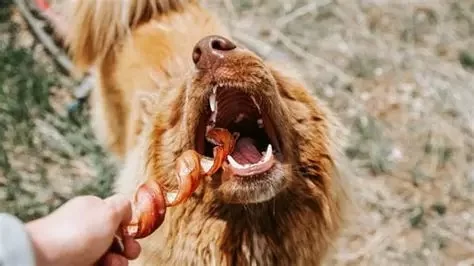Why Your Dog Is Chewing Everything and How to Redirect Behavior in 2025
- - 1. Understanding Why Dogs Chew
- - 2. Common Reasons Behind Destructive Chewing
- - 3. How to Effectively Redirect Chewing Behavior
- - 4. Practical Tips for Preventing Chewing
- - 5. When to Seek Professional Help for Your Dog's Behavior
1. Understanding Why Dogs Chew
Dogs chewing on things is a natural behavior. For puppies, it’s a part of the teething process, but for adult dogs, it can be an expression of boredom, stress, or a need to exercise their jaws. Chewing provides mental stimulation and can be a method of self-soothing for dogs. However, if your dog is chewing on everything from shoes to furniture, it can become problematic.
2. Common Reasons Behind Destructive Chewing
Destructive chewing may be driven by several factors, including:
- Boredom: Dogs are social animals and need engagement. If they don’t have enough physical or mental stimulation, they might chew out of frustration.
- Anxiety: Separation anxiety is common in dogs, leading them to chew as a coping mechanism when left alone.
- Teething: Puppies often chew when they are teething, which can cause discomfort. They chew to relieve the pressure on their gums.
- Excess energy: Dogs with high energy levels might chew to expend their energy if they are not getting enough exercise.
3. How to Effectively Redirect Chewing Behavior
Redirecting a dog’s chewing behavior starts with understanding the underlying cause. Once you have identified why your dog is chewing, you can take the following steps:
- Provide Chew Toys: Giving your dog appropriate chew toys can help redirect their chewing from furniture to something more acceptable. Look for toys designed to be durable and safe for your dog’s teeth.
- Increase Physical Exercise: Regular walks, playtime, and mental stimulation through activities like puzzle games can reduce boredom and anxiety that may lead to chewing.
- Use Positive Reinforcement: When your dog chews on the correct item, reward them with praise or treats. This will reinforce the desired behavior.
- Training Commands: Teaching your dog simple commands like “leave it” can help them understand which objects are off-limits.
4. Practical Tips for Preventing Chewing
Preventing your dog from chewing everything they encounter requires consistency and patience. Here are some practical tips to consider:
- Dog-Proof Your Home: Remove items that are easy to chew on, such as shoes, socks, or electrical cords. Keep these items out of your dog’s reach.
- Use Deterrents: Bitter sprays can be used on furniture or other objects that your dog tends to chew. The unpleasant taste will discourage them from chewing on those items.
- Crate Training: If your dog is left alone frequently, crate training can prevent them from chewing on things they shouldn’t. Make sure the crate is a comfortable and safe space.
5. When to Seek Professional Help for Your Dog's Behavior
If you have tried to address the chewing problem with limited success, it may be time to seek professional help. A certified dog trainer or behaviorist can provide personalized advice and techniques to manage your dog’s behavior. Additionally, if you suspect that your dog’s chewing is linked to anxiety, a veterinarian may be able to recommend solutions, including behavioral therapy or medication.
With the right strategies and tools, you can help your dog overcome excessive chewing and improve their behavior. Remember, patience and consistency are key when working with your dog to change their habits. Don’t hesitate to reach out to professional trainers or veterinarians when needed for additional guidance and support.











